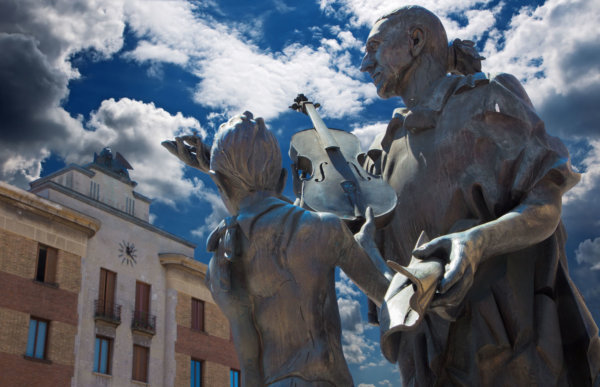Traces of 16th-century anti-Semitism hidden in the frescoes of the Cathedral of Santa Maria Assunta.
“Os peccatoris et dolosi super me apertum est”.
The mouth of the sinner and the fraudulent opened against me.
“Vidisti Dominem iniquitatem illorum adversum me”.
You have seen, Lord, their iniquity against me.
“Ego almost agnus qui portatur ad victimam”.
I, like a lamb that is brought to sacrifice.
These phrases can be read in the central nave of the Cathedral of Cremona, nose upwards, looking at the fresco cycle with the Stories of the Virgin and Christ on its walls, above the arches. Presbytery and counter-façade included.
Inscriptions on scrolls unrolled by powerful and severe men just below the episodes are represented. Generally (and improperly – but I will tell you another time) Prophets were introduced by the Friulian painter Giovanni Antonio de’ Sacchis a.k.a Pordenone between 1519 and 1521, while depicting the path to Calvary above the last three arches on the right side of the nave, plus the Crucifixion and the Deposition on the counter-façade.
Pordenone breaks the artistic convention used up to that moment, in which Prophets were framed by round windows to emphasize their temporal and physical distance from what happens in the New Testament. His Prophets come out of the circles to physically get in touch with the scenes. They communicate the absolute identity between the prophecy, the frescoed history above … and the time of those who look from below.
The words of his Prophets underline the innocence of Christ, victim of a community of wicked people. They point at those guilty people for his death, confused in the mists of their minds, unable to recognize Christ as the Son of God. Who are they? “Elementary, Watson” … the Jews.
The same Jews are represented by the artist in the large counter-facade fresco, where a powerful and crowded Crucifixion stands out.
They stand on the right, wrapped in Middle-Eastern turbans, on the bad thief’s side over that fracture in the ground that separates them from the ‘good’.. One of them, riding on a donkey (ancient symbol of the Synagogue), wears a yellow cloak, a colour always linked to infamy, corruption, betrayal and brought by members of the Jewish community since the Middle Ages. And it looks like he’s … counting. What? Maybe the reasons denying the identity between Christ and the Son of God or … his money, lent as a loan shark?
Ok, stop. It seems that this anti-Semitic mood spoken as religious divergence actually hides a much more prosaic motive: a political and economic one.
A motive that relies on a frightening conflict which broke out over the years between the local community, represented by that same oligarchy that gave its members to the Fabbriceria managing the Duomo’s artistic works, and the Jewish community, which on their hand, as money-lenders, could financially control the people and have some kind of tax exemptions.
What happened? Which is the reason of this enmity? Are there other signs somewhere? How did the Jews arrive in Cremona? And … how does this story end?





